Xerosis is the medical term used to describe very dry skin, which
affects a lot of people, especially during the dry and cold winter
months. It happens when your skin lacks moisture in its outer layer.
According to the American Skin Association, xerosis occurs due to the combination of low humidity levels and cold temperatures sucking the moisture out of your skin during the winter months. Additionally, the use of heaters and air ventilation during the winter can further dehydrate your skin (1).
Some of the other causes of xerosis include use of harsh soaps, overly long showers or baths, extended sun exposure, poor diet, dehydration and swimming frequently in chlorinated pools. It can also be a side effect of aging, diabetes and some medications.

While xerosis is a temporary problem, it may cause a lot of discomfort. Symptoms of xerosis include red, irritated or inflamed skin that’s scaly, rough and itchy or painful.
If left untreated, it can lead to more serious problems like bleeding, cracked and scaly skin. Also, it may lead to atopic dermatitis (eczema) or infections.
In most cases, xerosis responds well to lifestyle measures and home remedies. Home treatment for xerosis is aimed at relieving your symptoms and keeping the skin moisturized.
Note: See your doctor immediately if your skin is oozing, large areas of your skin are peeling and there are ring-shaped rashes.

Here are the top 10 home remedies for xerosis.
It also has vitamin E that helps retain moisture in your skin.
A study published in Dermatitis in 2004 found coconut oil as effective and safe as mineral oil when used as a moisturizer (2).
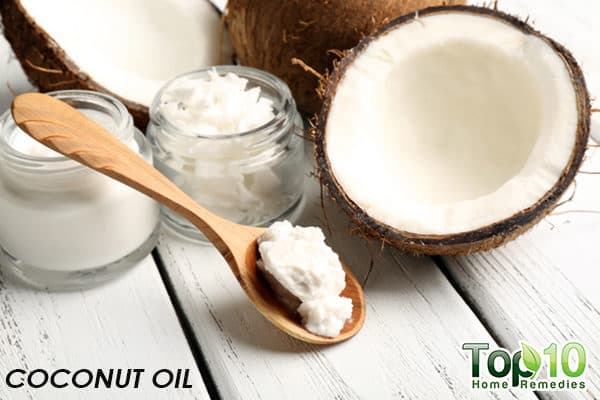
Another study published in the Indian Journal of Dermatology in 2016 reports that long-chain saturated fatty acids found naturally in coconut oil aid in skin barrier functions, eicosanoid production, membrane fluidity and cell signaling (3).
Again, in a recent 2018 study published in the Journal of Traditional and Complementary Medicine, experts highlight the anti-inflammatory and skin-protective benefits of virgin coconut oil and give the green light for the use of this oil in skin care formulations (4).
It helps lock in moisture to alleviate dryness and make your skin extra soft.
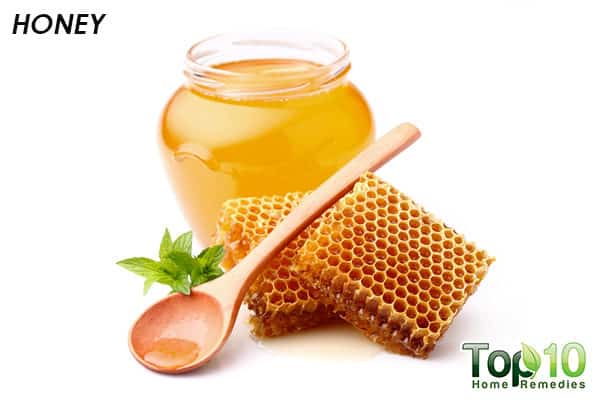
In a 2012 review published in AYU, researchers found honey to be beneficial for many types of skin diseases, including skin dryness (5).
Also, the protein in it helps prevent water loss and keeps the skin moisturized. It also helps soothe itchy and irritated skin.
A 2009 study published in the Journal of American Academy of Dermatology reports that colloidal oatmeal contains a number of components that bind to the skin to provide a protective barrier against skin dryness (6).

A 2014 study published in the Journal of Drugs in Dermatology reports that the active colloidal oatmeal moisturizer helps a lot in reducing skin dryness (7).
Being a great natural moisturizer, it keeps the skin well-hydrated and enhances its elasticity. It also helps restore the pH balance of the skin. Plus, it does not give your skin a greasy look.
A 2003 study published in the American Journal of Infection Control reports that aloe vera gel may help provide relief from dry skin (8).
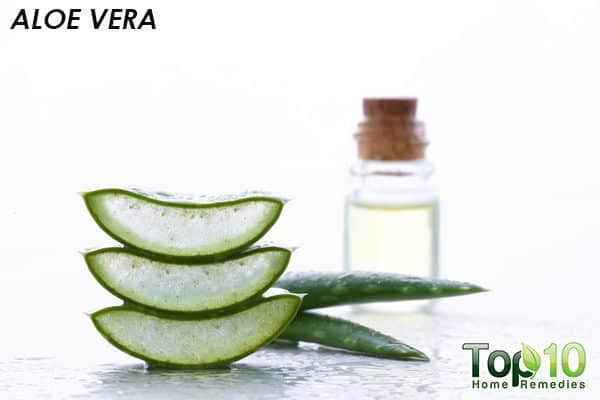
A 2006 study published in Skin Research and Technology reports that freeze-dried aloe vera extract is effective at improving skin hydration, possibly through a humectant mechanism. Consequently, it may be used in cosmetic products and also as a complement in the treatment of dry skin (9).
The high vitamin A and E content in it help in skin maintenance and repair to restore smooth and silky skin.

A 2018 study published in the International Journal of Molecular Sciences reports that avocado oil is an excellent source of enrichment for dry, damaged or chapped skin (10).

It also contains lactic acid, which helps exfoliate the skin to get rid of dry, dead skin cells. It additionally helps protect the skin’s fragile pH levels.
Being a humectant, it attracts water or moisture from outside the skin and draws it in. Also, it is an emollient, which means it helps hold all that moisture in by forming a protective layer over the skin. This in turn keeps it well-moisturized.

A 2002 study found that a cream containing glycerin seemed to be a suitable alternative to a cream containing urea and sodium chloride in the treatment of atopic dry skin (11).
Plus, it helps the body get rid of toxins, which is important for healthy skin.
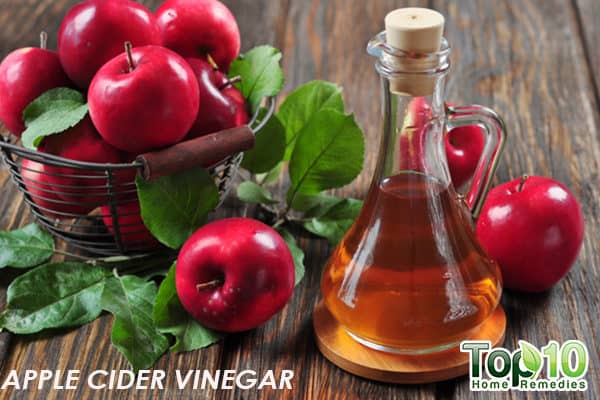

The heat from hot baths can cause your skin to dry out, which leads to dryness and itchiness. So, the solution here is to use cool water or lukewarm water for your bath or shower. At the same time, limit the duration of your bath or shower, as extended time can strip the moisture from your skin.
To help your skin retain moisture while bathing, you can add some moisturizing products to the water. Also, after taking a short bath or shower, don’t rub your skin with a towel. Pat yourself dry instead, then rub some olive, coconut or almond oil into your skin while you are still damp but not wet.
So, to add moisture to the air and help your skin retain moisture, use a humidifier.
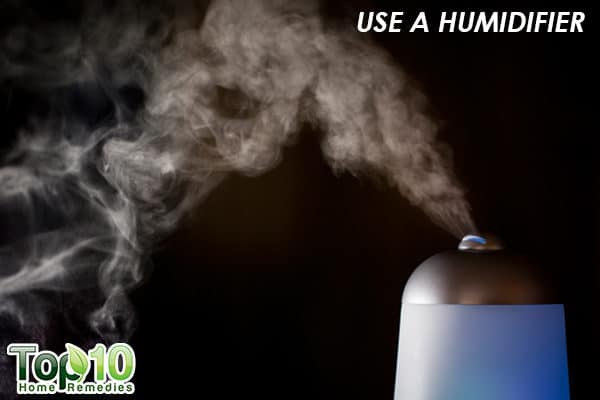
A humidifier will help keep the temperature of your room at a comfortable level that is not too warm or too cold. Try to maintain a humidity level between 45 and 55 percent to stop your skin from drying out.
You can buy a commercial humidifier from the market. Another option is to keep a bowl of water in each room to help increase the moisture in the air. No matter what you decide to use, keep it clean to prevent mold growth.
Additional Tips
According to the American Skin Association, xerosis occurs due to the combination of low humidity levels and cold temperatures sucking the moisture out of your skin during the winter months. Additionally, the use of heaters and air ventilation during the winter can further dehydrate your skin (1).
Some of the other causes of xerosis include use of harsh soaps, overly long showers or baths, extended sun exposure, poor diet, dehydration and swimming frequently in chlorinated pools. It can also be a side effect of aging, diabetes and some medications.

While xerosis is a temporary problem, it may cause a lot of discomfort. Symptoms of xerosis include red, irritated or inflamed skin that’s scaly, rough and itchy or painful.
If left untreated, it can lead to more serious problems like bleeding, cracked and scaly skin. Also, it may lead to atopic dermatitis (eczema) or infections.
In most cases, xerosis responds well to lifestyle measures and home remedies. Home treatment for xerosis is aimed at relieving your symptoms and keeping the skin moisturized.
Note: See your doctor immediately if your skin is oozing, large areas of your skin are peeling and there are ring-shaped rashes.

Here are the top 10 home remedies for xerosis.
Contents
1. Coconut Oil
Coconut oil is a popular and effective remedy for xerosis. It contains ample amounts of fatty acids that can compensate for any loss of moisture from the skin.It also has vitamin E that helps retain moisture in your skin.
A study published in Dermatitis in 2004 found coconut oil as effective and safe as mineral oil when used as a moisturizer (2).

Another study published in the Indian Journal of Dermatology in 2016 reports that long-chain saturated fatty acids found naturally in coconut oil aid in skin barrier functions, eicosanoid production, membrane fluidity and cell signaling (3).
Again, in a recent 2018 study published in the Journal of Traditional and Complementary Medicine, experts highlight the anti-inflammatory and skin-protective benefits of virgin coconut oil and give the green light for the use of this oil in skin care formulations (4).
- Warm up some extra-virgin coconut oil and apply it on your skin before bathing. Massage it gently so that the oil penetrates into the skin. Wait 10 minutes, then take a bath or shower. Repeat this remedy once daily.
- When suffering from extremely dry skin, you can apply extra-virgin coconut on your somewhat damp skin after taking a bath.
2. Honey
Honey serves as a natural moisturizer and is loaded with antioxidant, antimicrobial and humectant properties. All these properties make honey a good remedy to fight skin dryness.It helps lock in moisture to alleviate dryness and make your skin extra soft.

In a 2012 review published in AYU, researchers found honey to be beneficial for many types of skin diseases, including skin dryness (5).
- Before taking a bath or shower, rub some raw honey all over your body and massage gently using circular motions. Wait 10 minutes, then take a bath or shower. Do it once daily.
- Alternatively, mix equal amounts of honey and glycerin. Apply it on your body, wait 10 minutes and then rinse it off with lukewarm water. Do it once or twice daily.
- Another option is to mix equal amounts of honey, beeswax and olive oil. Melt the beeswax, then add the honey and olive oil. Store in a container in a cool place. Apply this blend on your body and massage for 5 minutes, then just leave it on for the rest of the day. Repeat this once every day.
3. Oatmeal
Oatmeal is another natural ingredient that can help treat dry skin. It is a natural cleansing and exfoliating agent that helps combat dryness by removing dead skin cells.Also, the protein in it helps prevent water loss and keeps the skin moisturized. It also helps soothe itchy and irritated skin.
A 2009 study published in the Journal of American Academy of Dermatology reports that colloidal oatmeal contains a number of components that bind to the skin to provide a protective barrier against skin dryness (6).

A 2014 study published in the Journal of Drugs in Dermatology reports that the active colloidal oatmeal moisturizer helps a lot in reducing skin dryness (7).
- Add 1 cup of ground oatmeal and a few drops of lavender oil to your bathwater and stir thoroughly.
- Soak in this soothing water for at least 15 minutes.
- When you’re done with the bath, rinse your body well with fresh water.
- Gently pat dry your skin and apply a light moisturizer.
- Enjoy this hydrating bath once or twice a week.
4. Aloe Vera
To fight skin dryness, aloe vera is just the right ingredient.Being a great natural moisturizer, it keeps the skin well-hydrated and enhances its elasticity. It also helps restore the pH balance of the skin. Plus, it does not give your skin a greasy look.
A 2003 study published in the American Journal of Infection Control reports that aloe vera gel may help provide relief from dry skin (8).

A 2006 study published in Skin Research and Technology reports that freeze-dried aloe vera extract is effective at improving skin hydration, possibly through a humectant mechanism. Consequently, it may be used in cosmetic products and also as a complement in the treatment of dry skin (9).
- Extract the gel from an aloe vera leaf.
- Apply it all over your body.
- Massage for a few minutes to help the gel penetrate deep into the skin.
- Wait 30 minutes, then rinse your body with lukewarm water.
- Do this once or twice daily.
5. Avocado
To nourish dry skin, avocado is also very beneficial. It helps soften and hydrate dry skin. The fatty acids in it easily penetrate deep into the skin to make up for any loss of moisture.The high vitamin A and E content in it help in skin maintenance and repair to restore smooth and silky skin.

A 2018 study published in the International Journal of Molecular Sciences reports that avocado oil is an excellent source of enrichment for dry, damaged or chapped skin (10).
- Mash 2 to 3 ripe avocados with a fork until you have a smooth texture.
- Mix in a little honey to make a mask.
- Apply the mixture on your skin and leave it on for 20 to 30 minutes.
- Rinse it off with lukewarm water and pat your skin dry.
- Repeat 2 or 3 times a week.
6. Milk Cream
Milk cream is another great natural ingredient that helps fight skin dryness. It quickly gets absorbed into the skin pores and keeps it moisturized for longer periods of time.
It also contains lactic acid, which helps exfoliate the skin to get rid of dry, dead skin cells. It additionally helps protect the skin’s fragile pH levels.
- Apply milk cream generously on your skin. Keep it on for 10 to 15 minutes, then rinse it off with lukewarm water. Do this 2 or 3 times a week.
- Alternatively, add enough milk cream to 4 tablespoons of gram flour to make a thick paste. Apply the paste on your body and massage gently for 15 minutes. Wash it off with lukewarm water. Do this once daily for 1 week.
7. Glycerin
To deal with xerosis, glycerin is very effective.Being a humectant, it attracts water or moisture from outside the skin and draws it in. Also, it is an emollient, which means it helps hold all that moisture in by forming a protective layer over the skin. This in turn keeps it well-moisturized.

A 2002 study found that a cream containing glycerin seemed to be a suitable alternative to a cream containing urea and sodium chloride in the treatment of atopic dry skin (11).
- Liberally apply glycerin on your dry skin.
- Leave it on for a few hours.
- Rinse it off with lukewarm water.
- Do this 2 or 3 times a week.
8. Apple Cider Vinegar
You can use apple cider vinegar both internally and externally to get relief from xerosis symptoms. It helps balance the skin’s pH level to relieve dry skin.Plus, it helps the body get rid of toxins, which is important for healthy skin.

- Add 1 cup of raw, unfiltered apple cider vinegar to your bathwater. Soak in this water for 15 to 20 minutes. Rinse it off with lukewarm water, pat dry your skin and apply a thick moisturizer. Do it once or twice daily, depending upon how dry your skin is.
- Also, mix 2 teaspoons each of raw, unfiltered apple cider vinegar and raw honey into a glass of water. Drink it twice a day.
9. Avoid Hot Baths
No matter how relaxing and soothing it can be to enjoy a hot bath, you must avoid it completely if you are suffering from xerosis. In fact, long hot baths can be the reason behind extremely dry skin.
The heat from hot baths can cause your skin to dry out, which leads to dryness and itchiness. So, the solution here is to use cool water or lukewarm water for your bath or shower. At the same time, limit the duration of your bath or shower, as extended time can strip the moisture from your skin.
To help your skin retain moisture while bathing, you can add some moisturizing products to the water. Also, after taking a short bath or shower, don’t rub your skin with a towel. Pat yourself dry instead, then rub some olive, coconut or almond oil into your skin while you are still damp but not wet.
10. Use a Humidifier
When humidity remains low, your skin is more prone to dryness. This problem is more common during the winter months as central heating systems force hot air throughout the home, which in turn dries out the indoor air.So, to add moisture to the air and help your skin retain moisture, use a humidifier.

A humidifier will help keep the temperature of your room at a comfortable level that is not too warm or too cold. Try to maintain a humidity level between 45 and 55 percent to stop your skin from drying out.
You can buy a commercial humidifier from the market. Another option is to keep a bowl of water in each room to help increase the moisture in the air. No matter what you decide to use, keep it clean to prevent mold growth.
Additional Tips
- Skin tends to react to sudden changes in temperature, so try to maintain an even temperature to deal with skin dryness.
- Choose skin care products that contain vitamins A, B6, C and E as well as riboflavin, selenium and zinc.
- Before buying skin care products, check the list of ingredients in order to avoid harsh chemicals.
- Use oil-based moisturizing lotions frequently, especially in the winter.
- Exposure to the sun’s rays can lead your skin to lose its natural lubricating oils and moisture. So, never go out without applying sunscreen lotion on all exposed body parts.
- Choose fabrics that are kind to your skin. Natural fibers, such as cotton and silk, allow your skin to breathe.
- Wash your clothes with detergents that do not contain dyes or perfume.
- If dry skin causes itching, apply cool compresses to the area.
- Use gentle cleansers without any dyes, fragrances or alcohol.
- Limit the use of soap on dry areas of skin and choose mild soaps with oil added.
- Avoid scratching the affected area.
- Stay hydrated by drinking plenty of water. Because your skin is 64 percent water, dry skin is often one of the first symptoms of dehydration.
- Include foods in your diet that contain omega-3 fatty acids, as they help make your skin cell membranes healthier.
Comments
Post a Comment